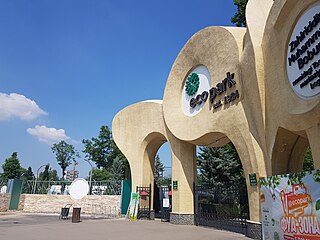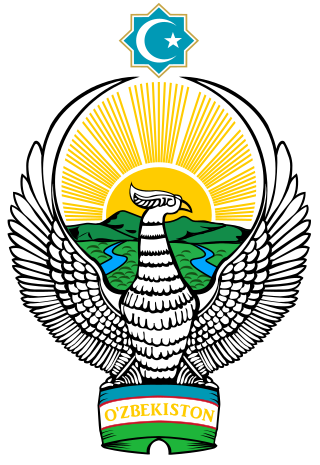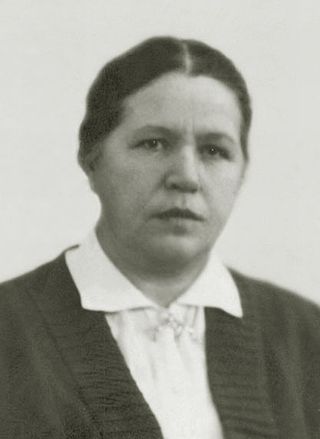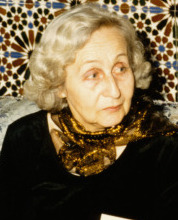
Samarkand or Samarqand is a city in southeastern Uzbekistan and among the oldest continuously inhabited cities in Central Asia. There is evidence of human activity in the area of the city from the late Paleolithic Era. Though there is no direct evidence of when Samarkand was founded, several theories propose that it was founded between the 8th and 7th centuries BCE. Prospering from its location on the Silk Road between China, Persia and Europe, at times Samarkand was one of the largest cities of Central Asia. Most of the inhabitants of the city are native speakers of the Tajik dialect of the Persian language. Samarkand is one of the historical centers of the Tajik people in Central Asia, and in the past was an important city of the great empires of Greater Iran.

Tashkent or Toshkent, historically known as Chach, is the capital and largest city of Uzbekistan. It is the most populous city in Central Asia, with a population of 3 million. It is located in northeastern Uzbekistan, near the border with Kazakhstan. Tashkent comes from the Turkic tash and kent, literally translated as "Stone City" or "City of Stones".

Today, the museums of Uzbekistan store over two million artifacts, evidence of the unique historical, cultural, and spiritual life of the Central Asian peoples that have lived in the region.

The president of the Republic of Uzbekistan is the head of state and executive authority in Uzbekistan. The office of President was established in 1991, replacing the position of Chairperson of the Presidium of the Supreme Soviet of the Uzbek SSR, which had existed since 1925. The president is directly elected for a term of five years, by citizens of Uzbekistan who have reached 18 years of age.
Vvedenskya is a monotypic genus of flowering plants belonging to the family Apiaceae. It just contains one species, Vvedenskya pinnatifoliaKorovin It is also in Subfamily Apioideae.

National University of Uzbekistan (NUUz) (Uzbek: Mirzo Ulugʻbek nomidagi Oʻzbekiston Milliy Universiteti, OʻzMU) is a public university located in Tashkent, Uzbekistan. NUUz is the oldest and largest university in Uzbekistan.

Tallinn Botanic Garden, is a botanical garden in Tallinn, Estonia. It is located on the right bank of the Pirita River, in the Kloostrimetsa forest in Pirita district. With an area of 123 ha, it is the largest in Estonia.

Hamid Olimjon was an Uzbek poet, playwright, scholar, and literary translator of the Soviet period. Hamid Olimjon is considered to be one of the finest twentieth-century Uzbek poets. The Uzbek Soviet Encyclopedia calls him "one of the founders of Uzbek Soviet literature". In addition to writing his own poetry, Hamid Olimjon translated the works of many famous foreign authors, such as Alexander Pushkin, Leo Tolstoy, Maxim Gorky, Vladimir Mayakovsky, Taras Shevchenko, and Mikhail Lermontov into the Uzbek language.

Zinaida Petrovna Botschantzeva was a Soviet and Russian botanist, cytologist, embryologist, and professor of the Tashkent university.

The Alisher Navoi State Museum of Literature of the Academy of Sciences of Uzbekistan is a scientific-cultural, educational establishment which mainly focuses on collecting and researching the historical materials and objects which are related to Uzbekistan's history. The museum plays a role in the cultural development of young generations in Uzbekistan and it keeps various documents, manuscripts from the Middle Ages.
The Museum of Health Care of Uzbekistan is in Uzbekistan. It was established in order to contribute information about the medicine and hygiene among the Uzbek people in an interesting way.
The Katagans are a medieval Mongol tribe related to Genghis Khan. In the period of Mongol conquest and assimilation with enslaved by Turkic tribes played its role in the ethnogenesis of modern Kazakhs, Kyrgyz, Karakalpaks, Uzbeks, Buryats, Uyghurs and others.

Numan Yunusovich Satimov was a Soviet and Uzbek mathematician, Doktor Nauk in Physical and Mathematical Sciences, academician of the Academy of Sciences of Uzbekistan (2000), and corresponding member of the Academy of Sciences of UzSSR from 1979 to 2006, and a laureate of the Biruni State Prize (1985). He was a specialist in the theory of differential equations, control theory and their applications.

Galina Anatolevna Pugachenkova was a Soviet archaeologist and art historian, regarded as a founder of Uzbek archaeology and central to the progression of archaeology and art history under Soviet regimes. Her work has contributed greatly to the register of surviving buildings in Central Asia and in many cases was the first register of traditional surviving buildings. G. A. Pugachenkova directed a branch of the archaeological expedition of southern Turkmenistan from 1946 to 1961, and of the Uzbek historical-artistic expedition from 1959 to 1984.

Mikhail Stepanovich Andreyev was a Russian-Uzbek and Soviet orientalist, cultural researcher of Central Asia, ethnographer, linguist, and archaeologist. He was initially supervised by Vladimir Nalivkin, and was the teacher of Olga Alexandrovna Sukhareva. He was a corresponding member of the Russian Academy of Sciences.
The Ashgabat Botanical Garden in Ashgabat is the oldest botanical garden in Turkmenistan. The name Ashgabat literally means "city of love or city of devotion." Turkmenistan is found in the Central Asia. It is bordered by Kazakhstan to the northwest, Uzbekistan to the north and east, Afghanistan to the southeast, Iran to the south and southwest and the Caspian Sea to the west. Entrance to the botanical garden is located in the eastern side of Ashgabat on the territory of the academic sciences of Turkmenistan between streets 2029 and Tagta.

Margarita Ivanovna Filanovich is a Soviet historian, archaeologist, and leader of a Tashkent archaeological expedition.

Turin Polytechnic University in Tashkent is a non-profit public higher education institution in Uzbekistan. Turin Polytechnic University in Tashkent was established in 2009 in a partnership with Politecnico di Torino, Italy. TTPU's main objective is to prepare specialists for the automotive, mechanical engineering, electrical industries and companies in the field of civil engineering and construction, and for the power industry, in accordance with the educational programs adopted in collaboration with Politecnico di Torino, Italy.













